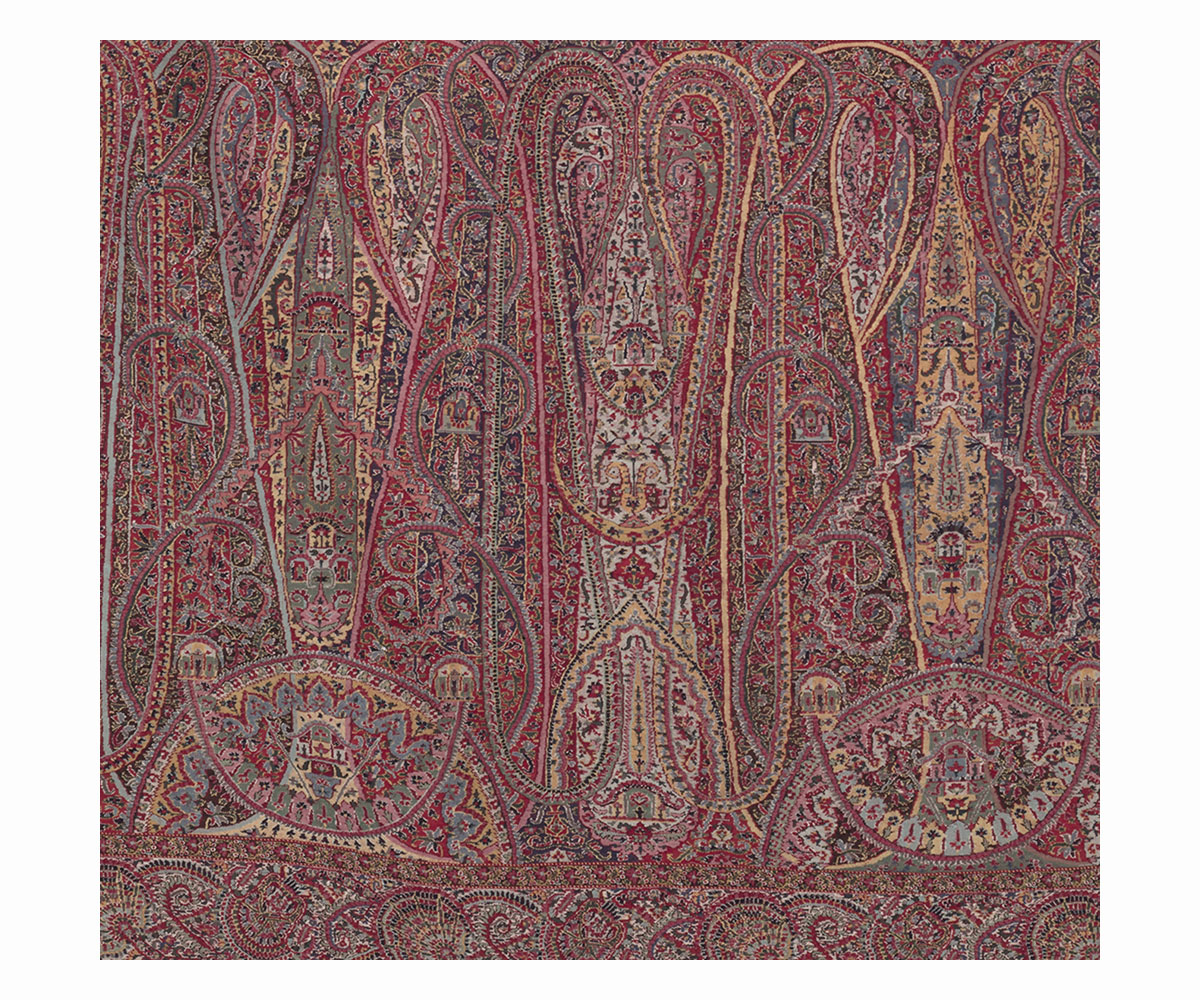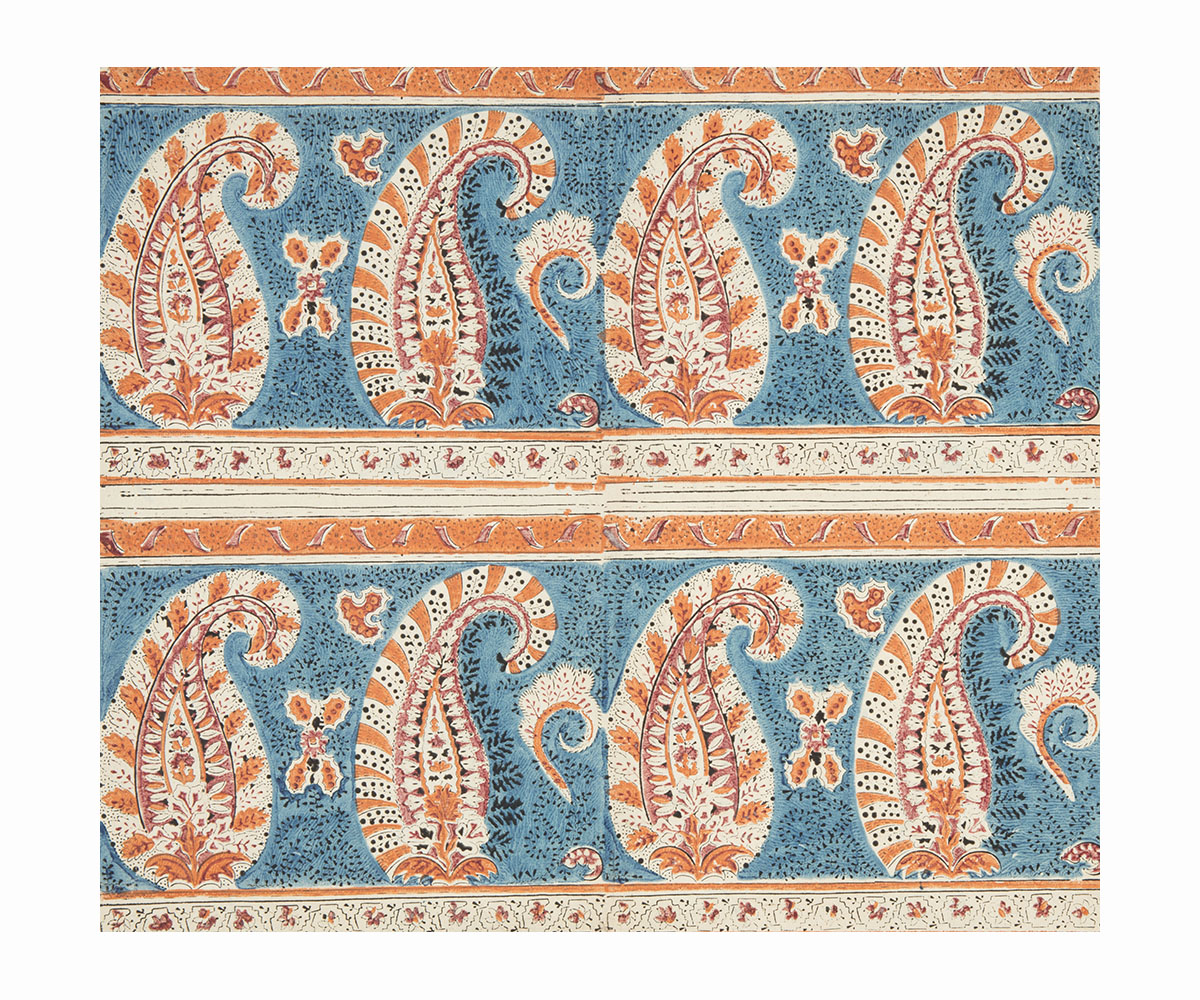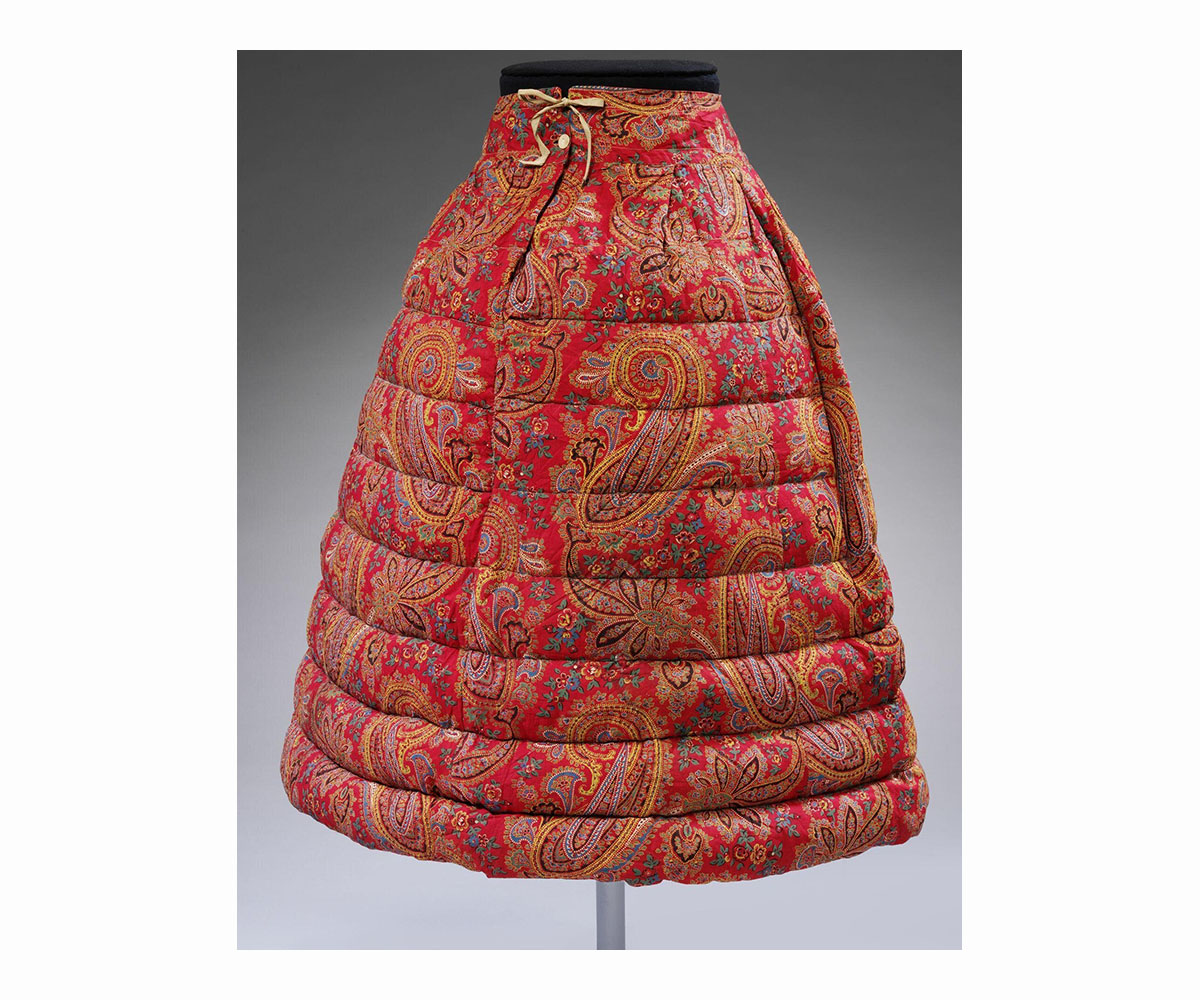ARTICLE
Badaam Motif
Recognisable by its stylised almond-like shape, the badaam motif bears visual similarities to the Persian boteh, or buta, and the kairi, or kalka motif. Its name is derived from the Persian term badaam, meaning “almond”. The badaam motif has several variants and analogues in various textile traditions, the best-known among which is the Paisley motif.
In India, the badaam motif is especially associated with the Kashmir Valley, where it developed in the sixteenth century with the arrival of the Mughals. It appears most commonly on the pashmina shawl as a part of the floral border design or as stand-alone outline motifs filled in with grouped flowers. The use of this motif has since extended beyond the traditional format of the Pashmina shawl and into other forms of printed, woven and embroidered fabric such as shawls and bed linen
The motif entered the popular visual idiom with its adoption and subsequent adaptation by the hippie culture of the 1960s and 70s and, later, the cowboy culture in the American Southwest. This paved the way for its entry into contemporary formal wear produced by large European luxury fashion houses and the couture of high-fashion brands. In India, besides continuing to be seen in traditional Kashmiri shawls, the badaam motif is now also a prominent feature of the chikankari embroidery tradition of Uttar Pradesh.
Bibliography
Our website is currently undergoing maintenance and re-design, due to which we have had to take down some of our bibliographies. While these will be re-published shortly, you can request references for specific articles by writing to hellomapacademy@map-india.org.










